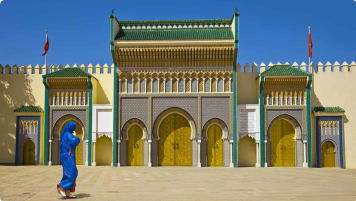Birth of the Nile River: Sources and Tributaries
The Nile, one of the world's great river systems for trade and agricultural production. Learn more about the river and its journey our across Egypt. An Antipodean travel company serving World Travellers since 1983 with small group educational tours for senior couples and mature solo travellers.
3 Apr 23 · 8 mins read
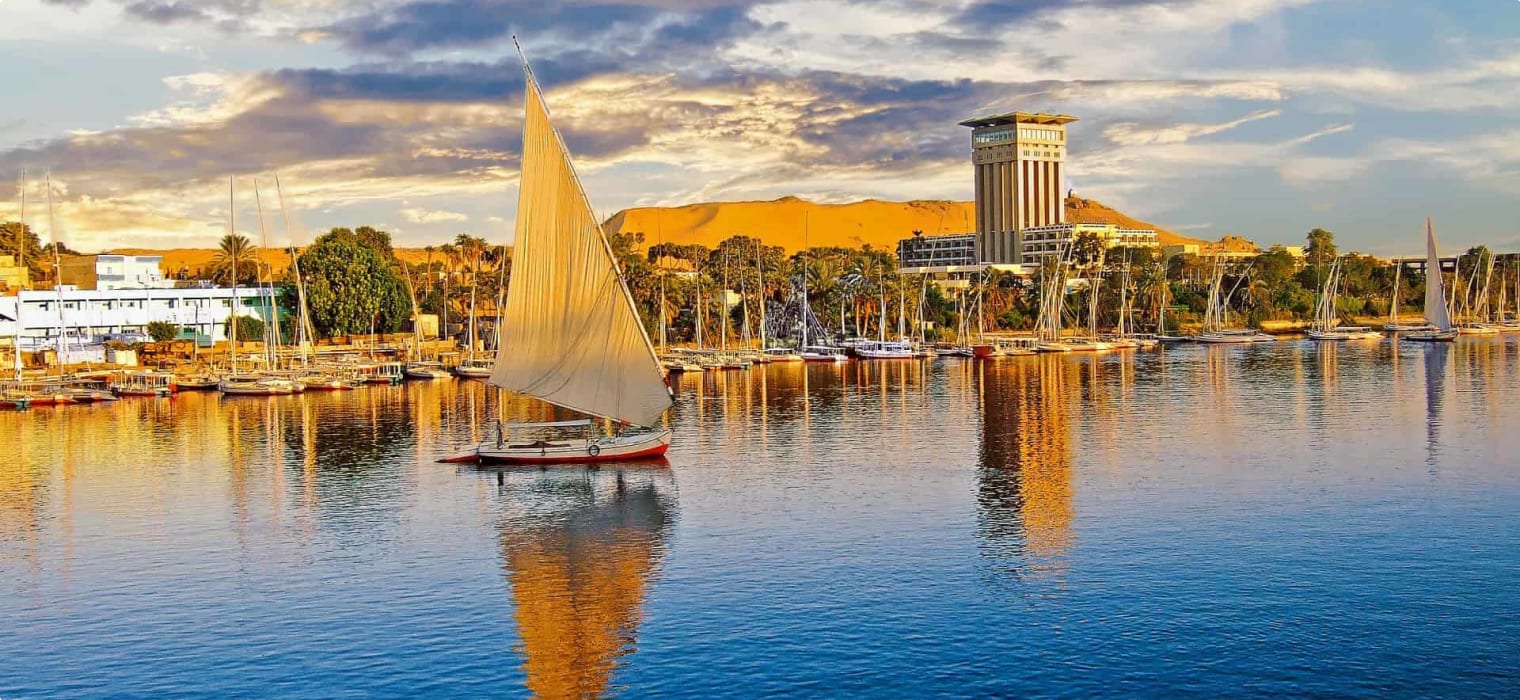
Birth of the Nile River
The magnificent Nile is the longest river in the world. At over 6,800 km long, it flows from south to north through east Africa. Along its course, it runs through or along the border of 11 countries, including Burundi, Tanzania, Rwanda, the Democratic Republic of the Congo, Kenya, Uganda, Sudan, Ethiopia, South Sudan, and Egypt. In all, that’s a drainage area which covers around 3 million square km, about a 10th of the area of the entire African continent.
Its present form though is a relatively recent phenomenon, born from geological processes some 25,000 years ago. At this time water in Lake Victoria overflowed, spilling over to the north and forming a riverbed. This would then flow northwards to connect with water flowing from Ethiopia at present-day Khartoum, linking the two major tributaries of the Nile, the White Nile and the Blue Nile. From here the river Nile flows all the way to the Mediterranean Sea, thus unifying the drainage from Lake Victoria to the Mediterranean.
The earlier Nile, a much shorter stream, is thought to have originated some 30 million years ago from sources at about at about 18° to 20° N latitude. Its main headstream then is thought to have been the present Atbara River, the current Nile’s other principal tributary.
This article explores the birth of the Nile by following the course of its three primary tributaries: the While Nile, the Blue Nile, and the Atbara. It is intended as background reading for Odyssey Traveller’s 18-day small group escorted history and culture tour of Egypt for mature and senior travellers. During this tour, we enjoy a four-day cruise down the spectacular Nile River, gaining a unique view of some of Egypt’s most famous sites, statues and antiquities as we watch five thousand years of history and culture float past. Along the way we enjoy shore excursions to Luxor, the Valley of Kings, and Kom Ombo, all the while appreciating the Nile as an invaluable life source for the people of Egypt.
Much of the information used in this article is sourced from Terje Tvedt’s The Nile: History’s Greatest River.

The Source of the Nile
It is generally agreed that the Nile has several sources. Many encyclopaedists and tourist guides tend to describe it as Lake Victoria. This great lake, along with others in Central Africa, was formed when a wetter climate arrived here following the retreat of ice in other parts of the globe during the last ice age some 25,00 years ago. Changes in precipitation patterns combined with geological uplift resulted in Lakes Victoria and Albert overflowing with rainwater. This began to stream northwards, thereby forming the constant-flowing Nile.
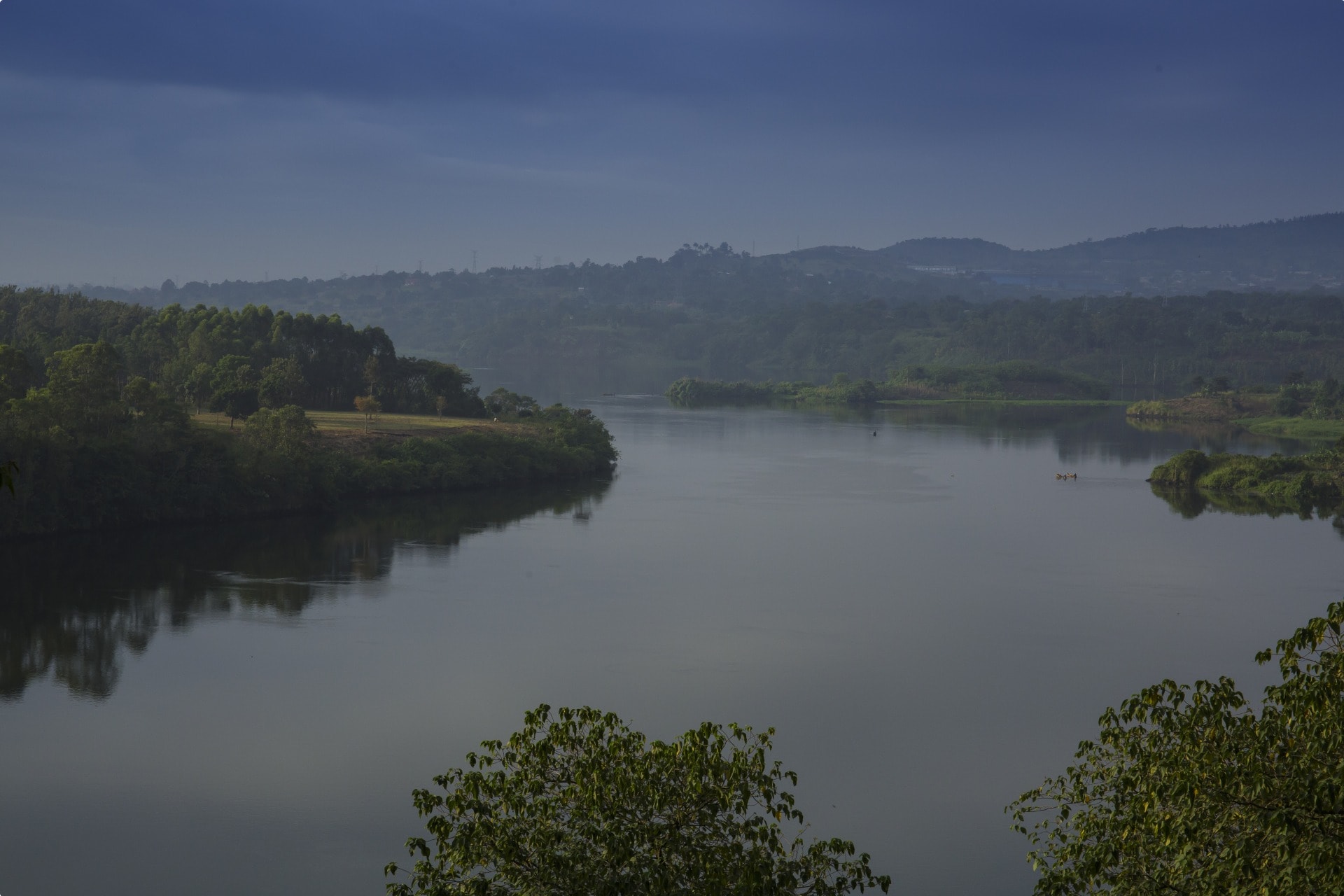
There is some disagreement, however, about the Nile’s most distant source, as there are actually many considerably sized feeder rivers that flow into Lake Victoria. Sources flow in from the east from Kenya, in the west form Rwanda and in the Democratic Republic of Congo, and in the south from Burundi.
The headstream with the most distant source is the Kagera River, which rises in the highlands of Burundi near the northern tip of Lake Tanganyika before flowing into Lake Victoria. However, even after centuries of exploration, there is still disagreement about which is the longest tributary of the Kahara and thus the Nile’s ultimate source. Generally, though it as regarded as either the Nyabarongo River (Rwanda) or Ruvyironza.
These rivers, along with many others of the Nile’s most important tributaries, form in the mountains in the west of the Nile Basin. This is one of the wettest regions on earth, with rainfall 360 days a year and an annual average of 5 metres. Due to these fortuitous meteorological and geological conditions the Nile enjoys a continual water flow, even during those times of the year when the Nile rivers in Ethiopia dwindle and some of them practically dry up.
The White Nile
The White Nile refers to the stretch of the Nile that originates in Lake Victoria and flows northward to the merger with the Blue Nile at Khartoum. The name comes from its clay sediment deposits which turns the water into a pale white colour. Along its course, various sections are also known by other names, including the Victoria, Albert, and Mountain Niles.
The White Nile emerges from Lake Victoria at Ripon Falls near Jinja, Uganda. For this stretch, also known as the Victoria Nile, it flows for approximately 500km northwards. Along its course it enters the shallow Lake Kyoga and passed through its swamp vegetation. It then flows out in a westerly direction through the Murchison falls until it reaches the northern end of Lake Albert.
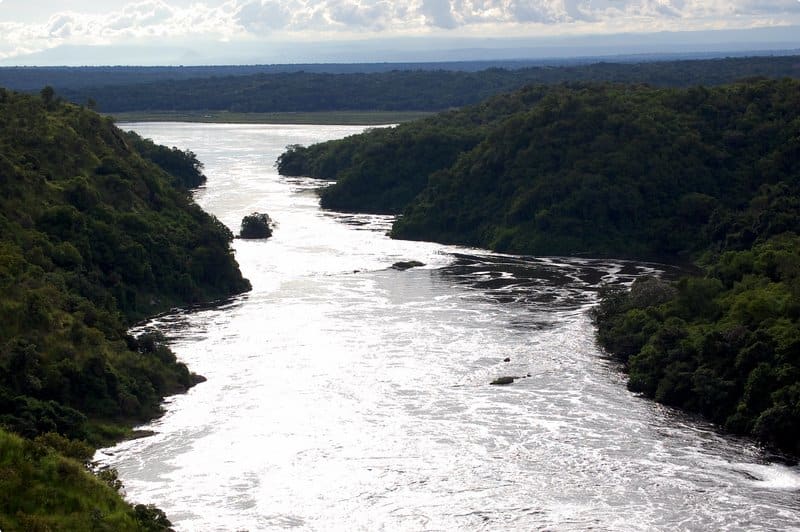
From this point, the river continues north through Uganda as the Albert Nile. This portion of the river is somewhat wider and slower, bordered by swampy growth. It crosses the Uganda-South Sudan border at the Fola Rapids below Nimule, where it is called Bahr al Jabal or Mountain Nile.
This section of the river flows for some 1000km, receiving additional water from short tributaries on both banks. Situated on the level plains of South Sudan, the great volume of additional water that arrives during the rainy season cannot be accommodated by the river. At this point the water extends in all directions inundating most of the entire plain. As a result, large quantities of aquatic vegetation grow, creating one of the world’s largest swamps, known as the Sudd region. Around 50% of the water here is lost in this swamp to evaporation and transpiration.
Bahr al Jabal eventually joins Bahr al Ghazal north of the Sudd at a large lagoon called Lake No, where the mainstream takes an easterly direction. At Malakal, the mainstream is joined by the Sobat River, after which the river is known solely as the White Nile. Along the next stretch it is a wide placid stream. It has a slow declivity and the water flow varies little. Because the valley is wide and swallow though there is a considerable loss of water due to both evaporation and seepage. Along the way the White Nile receives no tributaries, until it reaches Khartoum in Sudan where it merges with the Blue Nile to form the Nile River.
Here a remarkable hydrological process takes place. In the autumn, the Blue Nile is full of water and acts as a natural barrier to the water in the smaller and weaker White Nile. As the Blue Nile water level gradually decreases throughout the spring, the pent-up water from the White Nile runs down to Egypt, and it is this phenomenon that, for thousands of years, made it possible to live and farm during the summer as well.
The Blue Nile
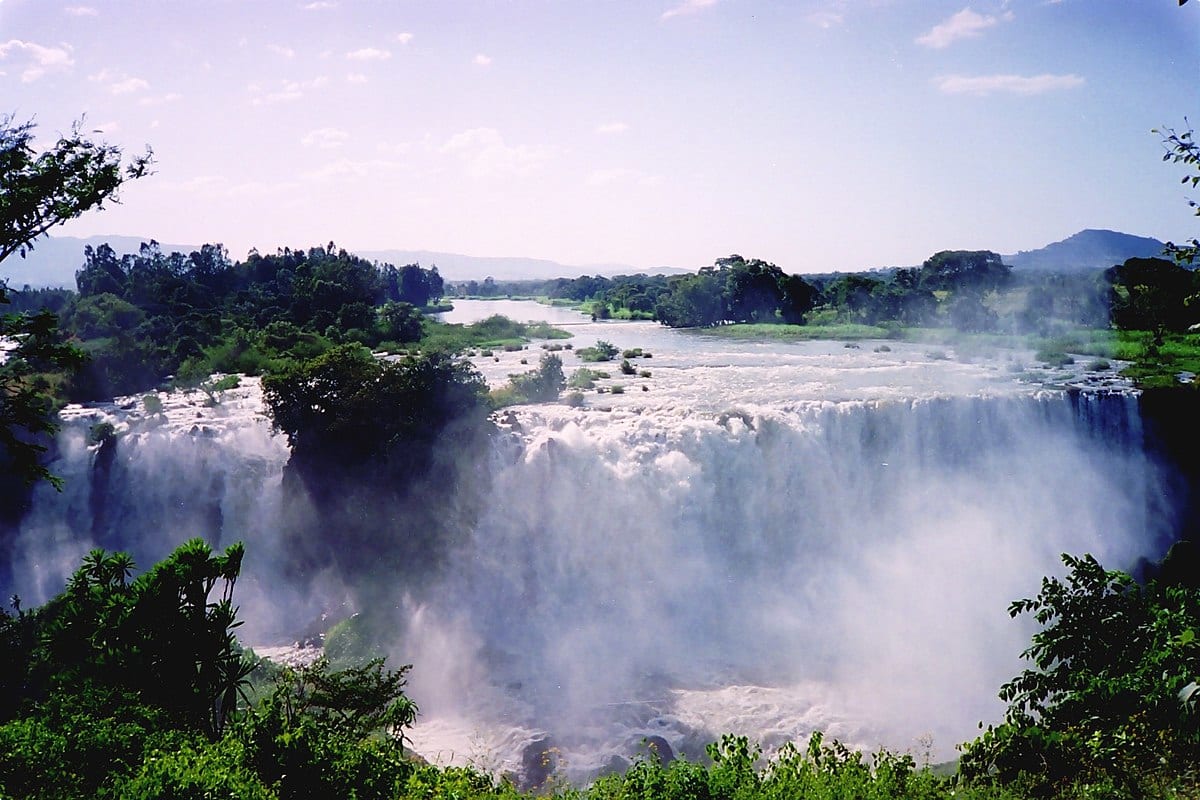
The Blue Nile flows around 2,500km north-westerly from its humble holy source, a spring held sacred by the Ethiopian Orthodox Church. From here, high up in the towering Ethiopian highlands, some 6,000 feet above sea level, a small stream known as the Abay flows down to Lake Tana. This is a fairly shallow lake and covers an approximate 2,000 square kilometres.
The Blue Nile then leaves Lake Tana in a south-easterly direction, flowing through a series of rapids, before entering the 400km long Grand Canyon of the Nile. The river then loops across northwest Ethiopia, receiving inflows from numerous tributaries, including the Wanga, Bashilo, and Walaga Rivers on the left bank and the Handassa, Tul, and Sade Rivers on the right bank, amongst others.
The river then flows northwest crossing the border into southern Sudan where it continues to flow in the same direction for about 650 km. Along the way, the Dinder River joins on the right bank at Dinder. At the end of this stretch, the Blue Nile then meets the White Nile at Khartoum.
The Blue Nile’s flow varies considerably over its yearly cycle. During the autumn, in the flood season, it is the utterly dominant tributary of the Nile, so much so that it accounts for around 80 per cent of all water and silt that make up the main flow of the river. During this time it sends down almost 90% of its entire annual water discharge. For the rest of the year its flow is quite weak.
The Atbara
The last major tributary of the Nile is the Atbara River. It originates in Ethiopia north of Lake Tana at heights of 6,000 to 10,000 feet above sea level . It then flows 800 km north-westerly until it joins the main stream of the Nile some 300 km north of Khartoum. Along the way, its main tributaries are are the Angereb and the Tekezē.
Like the Blue Nile, the Atbara has a considerable variation in water flow, rising and falling rapidly each year. Over all it contributes more than 10 per cent of the Nile’s annual flow, but most of this is during the flood season. At this point it is a large, muddy river. It then almost completely dries up during the summer, forming a mere string of pools.
After the Atbara, the Nile receives no influx of new water in its almost 2,700 km long journey through northern Sudan and Egypt to the Mediterranean sea. This makes it unique as this flow is through one of the world’s driest and hottest regions: no other river flows such a distance through desert landscape without receiving contributions from other water sources.
Nile Cruise Tour
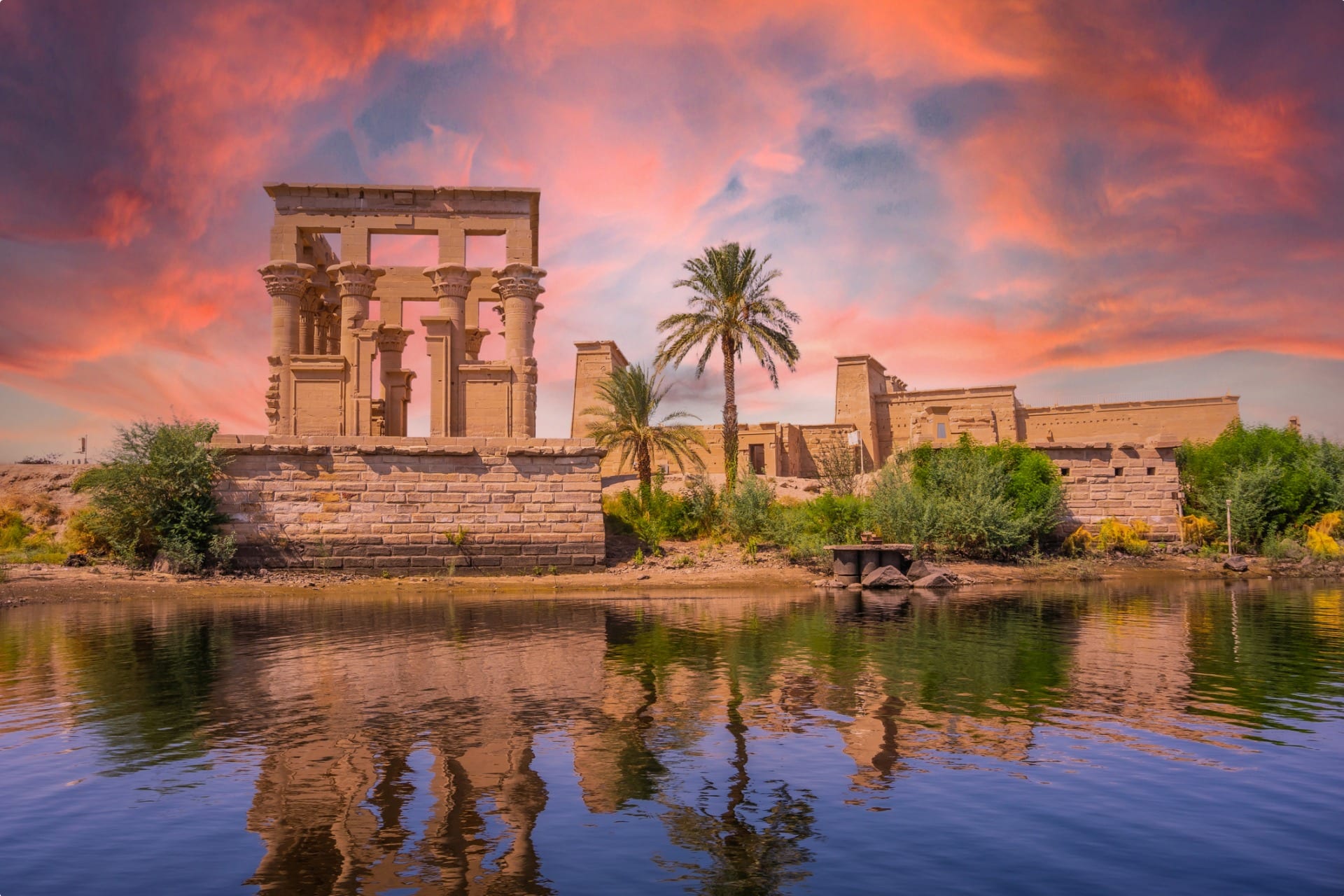
Odyssey Traveller conducts a 4-day river cruse of the Nile as part of our 18-day escorted small group history & cultural tour of Egypt. This small group tour focuses on the history and culture of ancient Egypt, designed especially for mature-aged and senior travellers. Other tour operators or tour companies may simply survey the archaeological sites and monuments to the Pharaohs and the Giza pyramids. Our Egypt tour, however, also visits contemporary feats such as the Aswan Dam and lets us witness landmarks of the contemporary Egyptian experience, such as Tahrir Square. These sites show that Egypt’s role as the pivot of civilisation is far from ended. Visit Egypt with Odyssey Traveller on these escorted tours as we stand in awe of the symmetry and majesty of the Egyptians’ ancient pyramids from Luxor to Aswan, and discuss the country’s present-day experiences and accomplishments. During our Nile River cruise we enjoy shore excursions to Luxor, the Valley of Kings, and Kom Ombo, all the while learning about the grandeur of the Nile and its invaluable role in supporting Egyptian people throughout history until the present day.
There is also the opportunity to visit our Morocco, Jordan or Iran tours before embarking on this tour of Egypt.
Odyssey Traveller has been serving global travellers since 1983 with educational tours of the history, culture, and architecture of our destinations designed for mature and senior travellers. We specialise in offering small group tours partnering with a local tour guide at each destination to provide a relaxed and comfortable pace and atmosphere that sets us apart from larger tour groups. Tours consist of small groups of between 6 and 12 people and are cost inclusive of all entrances, tipping and majority of meals. For more information, click here, and head to this page to make a booking.
Articles about Egypt published by Odyssey Traveller.
- Uncovering Ancient Egypt: What we can learn from Egyptologists
- From Cairo to NAC: Egypt builds a new capital city
- Questions about Egypt: The Definitive Guide
- Egyptian Linen Treasures
- Discover Egypt with ten great books
- Cairo development site reveals ancient statue
- The time to visit Egypt is now
- The Rosetta Rosetta Stone: Decoding the Secrets of Ancient Egypt
External articles to assist you on your visit to Egypt
Related Tours
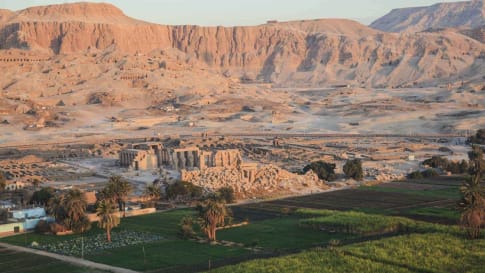
18 days
Nov, JanEgypt tour: escorted small group history & cultural tour of Egypt
Visiting Egypt
Our small group program for senior and mature couples and solo travelers takes us to contemporary feats such as the Aswan Dam and also to current crucibles of the Egyptian experience such as Tahrir Square. Proof, were it needed, that Egypt’s role as the pivot of civilisation is far from ended. There is the opportunity to visit our Morocco, Jordan or Iran tours before embarking on this tour of Egypt.
From A$10,950 AUD
View Tour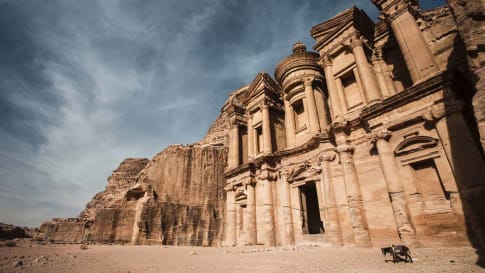
9 days
Jan, Apr, OctAncient History of Jordan | Escorted Small Group Tour
Visiting Jordan
Explore Jordan, visiting its capital city, Amman Jordan, the ancient Desert Castles, Petra and the Dead Sea on a small group package tour for mature and senior travellers travelling as a couple or Solo.
From A$5,950 AUD
View Tour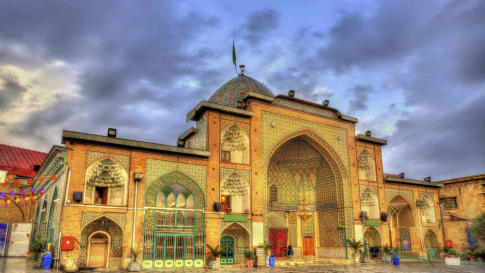
17 days
Sep, Nov, AprIran Culture and History Escorted Small Group Tour for seniors
Visiting Iran
Unlike its neighbours to the west and northwest, Iran had not adopted Christianity and it was the explosive spread of Islam and its ready adoption, without the Arabic language or customs, which helped unite the culture and greatly enrich Persian heritage. This small group tour program includes the great cities of Iran, historic sites, mosques, gardens, bazaars and teahouses for couples and solo travellers.
From A$11,825 AUD
View Tour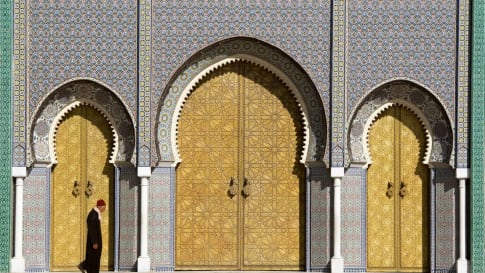
20 days
Mar, Apr, OctMorocco tour for senior travellers
Visiting Morocco
Morocco is a gateway: step through and discover a world of colour, diversity and wonder to Meknes, Rabat and more unlike anything you have experienced before. Rich traditions and heritage are explored and visited on a small group tour for mature and senior travellers couples and solo travellers.
From A$11,915 AUD
View TourRelated Articles
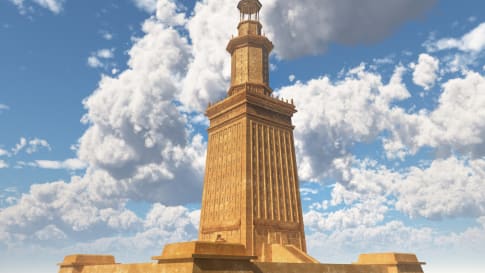
Alexandria, Egypt
Article for senior couples and mature solo travellers curious about Egypt, Greek and Roman history. Including the links to Venice and the trade in Spice and grain. Join a small group educational tour to learn and discover more.

Caesar and Cleopatra in Egypt
Learn about the Roman Emperor Caesar exploring Egypt and the historians interpretation of the relationship with Cleopatra. An Antipodean travel company serving World Travellers since 1983 with small group educational tours for senior couples and mature solo travellers.

Nile River Cruise
The Nile River is the longest river in the world at 6695 kilometres long. Flowing from Uganda, through eleven countries, through to Egypt, it empties into the Mediterranean Sea.

Questions about Egypt for senior travellers.
A small group tour to explore what remains of ancient Egypt. Visit Cairo, Luxor and the valley of the King and Queen plus Alexandria. A tour for senior and mature travellers.
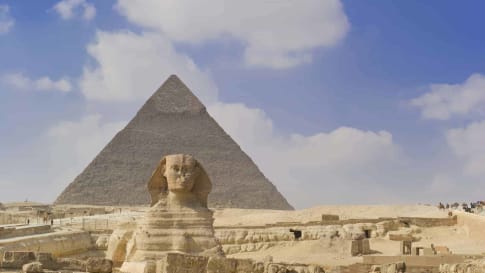
The Pyramids and the Sphinx
Egypt is home to one of the only remaining wonder of the Ancient World: The Great Pyramids of Egypt. The pyramids are monumental tombs for pharaohs from the 4th dynasty and relics of Egypt's Old Kingdom era, constructed around 4,500 years ago.
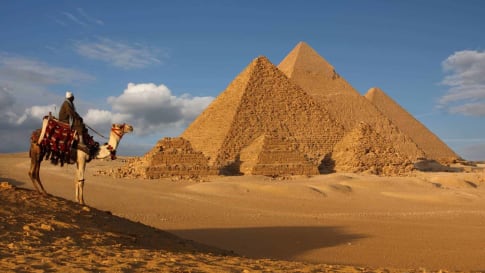
Uncovering Ancient Egypt: What we can learn from Egyptologists
In this article, we will discover some of the pioneers of Egyptology, the great archaeologists, excavators and linguists who have helped us explore, understand and protect Ancient Egypt and its heritage.
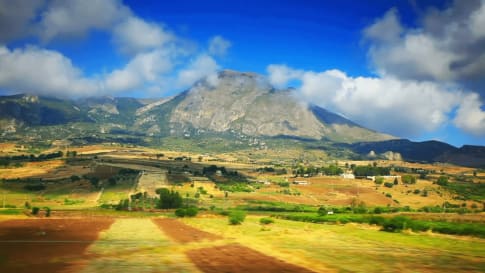
Early History of Sicily: From the Phoenicians to the Arab Conquest
Early History of Sicily: From the Phoenicians to the Arab Conquest (800 BC to the 10th Century) Sicily in Southern Italy is the largest island in the Mediterranean, separated from the mainland by the Strait…

Mediterranean Islands: Malta, Sicily, Sardinia and Corsica
Malta, Sicily, Sardinia and Corsica: An Educational Journey through Western Mediterranean This article takes you on a journey through the beautiful islands of the western Mediterranean – Malta, Sicily, Sardinia and Corsica – by tracing…

The Phoenicians and Purple Dye
Article supporting tours to Morocco, Tunisia, Spain, Sicily and Crete. The Phoenicians where one of the empires controlling the Mediterranean sea from the 11th to 13th century. This article is for small group educational tours for senior couple and mature solo travellers joining a program.
